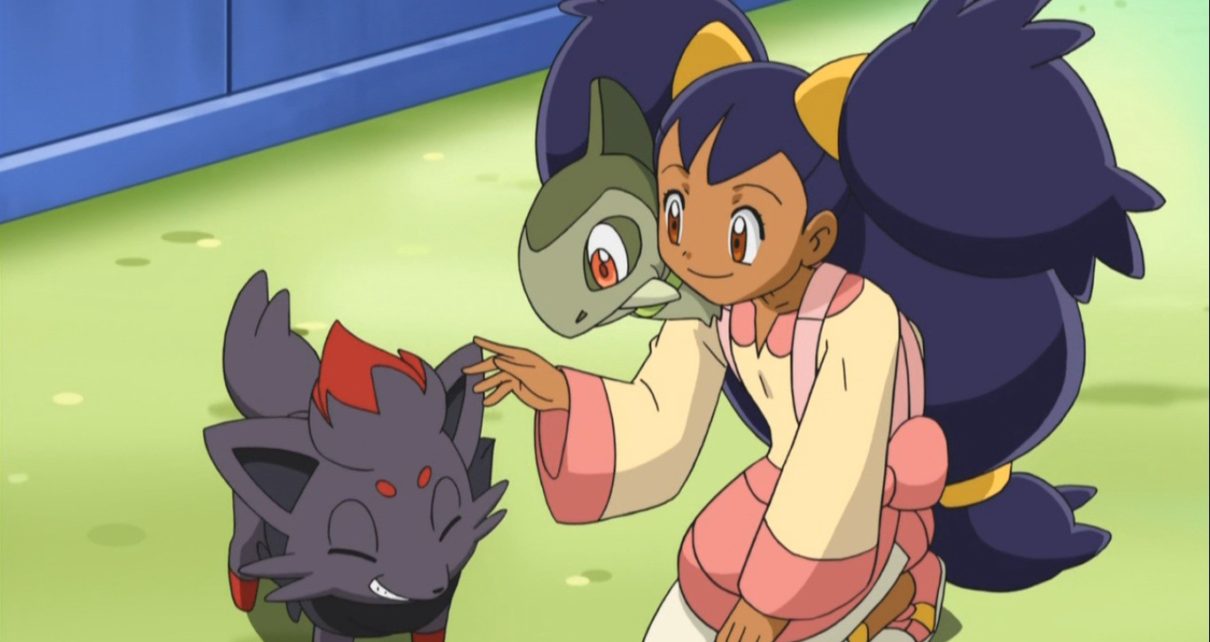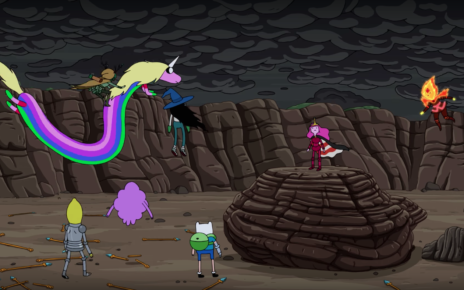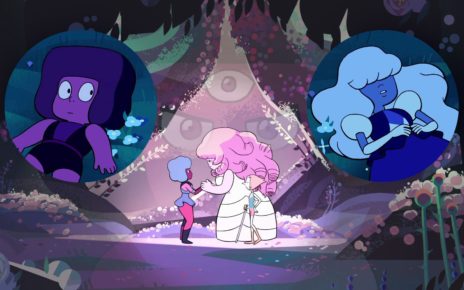Since February 2016, the Pokémon franchise has been enjoying what might be the longest 20th anniversary celebration in history and I ain’t even mad. While the recent Sun/Moon game expansion and Pokémon GO sparked a widespread renewed interest, for me, becoming reacquainted with the anime series has been an entirely different experience.
Considering the ethnocentrism of much of Japanese culture, I never really expected that the human characters in the anime—in any of its many iterations—would reflect the same extended diversity as that of the Pokémon themselves. (Pokémon sizes, types, strengths, weaknesses, moves, etc. keep growing, as the franchise’s array of monsters has currently grown to 802 unique species.) It is, after all, an anime adapted from a popular toy property for a primarily white Western audience. Sure, the show’s original run featured Pewter City Gym Leader and traveling companion Brock, whose complexion was the darkest of the protagonists of the original Pokémon anime, but when I was 10–11 years old, I didn’t think much of it. And upon returning to it, I honestly wasn’t expecting too many more characters like him—characters whose skin tones varied from the typical anime’s pale pinks and powder whites.
But time has passed, and the series has changed so much. I realized that when I met Iris.
For the first time in the Pokemon franchise, I saw me.
In the Black & White series, Iris is one of Ash Ketchum’s traveling companions. She specializes in Dragon-type Pokemon and, the same way Ash’s Pikachu stays outside of its Poké Ball, Iris carries her Axew on her shoulder everywhere she went. In the games, she is one of the Opelucid City Gym Leaders—the second being her mentor, Drayden—and later the Unova League Champion.
Here was a raven-haired, brown-skinned girl with big, bright eyes and the great ambition to be the best Dragon Master she could be. For the first time in the Pokémon franchise, I saw me.
Within the last few years, Brown women and girls have finally gotten more some satisfying character arcs in narrative series: Alex Parrish in Quantico, Dr. Mindy Lahiri in The Mindy Project, Connie Maheswaran in Steven Universe, Iden Versio in Star Wars: Battlefront II, and Kamala Khan taking on the Ms. Marvel mantle for Marvel Comics. In Pokémon, Iris is far different from Ash’s last two female companions: where May from Hoenn and Dawn from Sinnoh are pale-skinned first-time trainers, Iris is the brown Daenerys Targaryen of the Unova region—swinging on vines, climbing trees, and eating berries, already out on her adventure with her Axew in-tow. The writers went all-in on introducing someone completely unique to the franchise, diverse not only in her appearance but in her traits and abilities as a trainer, too. It’s a fantastic departure from the character archetype of Ash’s female friends in past seasons, and the show gives her the personal history to show precisely that.
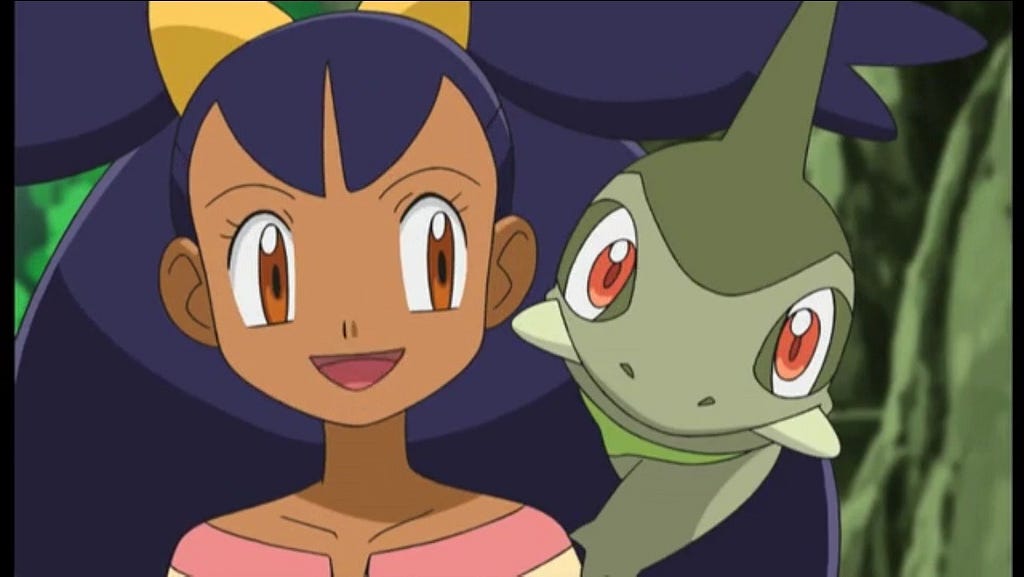
In the episode “Drayden vs. Iris: Past, Present, and Future!,” Iris is very apprehensive about returning to Opelucid City to battle her mentor, Drayden, at his invitation. A wave of melancholy washes over her, and she dashes to the top of the city’s radio tower, echoing a self-care coping mechanism from her childhood.
When her concerned traveling partners, Ash and Cilan, follow her to see what’s wrong, Iris tells them about when, as a young girl, she left her home in the Village of Dragons to study at the prestigious Opelucid Academy, where she would specialize in Dragon-type Pokémon. She had a particularly hard time adjusting to the learning process, she tells them—and none of the other young trainers wanted to be friends with her. In the flashback visuals that accompany her tale, Iris is the only student with a dark complexion among the students in the classroom. It seems clear that she struggled socially at the Academy as a direct result of her ethnicity, and as a result, she exhibited clear symptoms of depression — symptoms I am well familiar with.
Her dorm director, Martha, and Academy President Drayden, see potential in Iris, but seem blind to the implications of her ostracizing, and chalk it up to her coming from a remote location in the Unova region. And it’s true that Iris was the only student from the Village of Dragons. But that should have only invited more questions from authority figures. Why didn’t any of the other students take an interest in getting to know her and where she came from? Speaking visually, why did the students only hang out and study with others who looked like them?
Iris reveals to Ash and Cilan that, to cope with her feelings of isolation at the Academy, she would often escape to the very spot they were in, the top of the city’s radio tower, in hopes of catching a glimpse of her hometown. She had other self-care mechanisms as well—drawing on the walls of her dorm room, or asking Martha to cook her one of her favorite meals.
But in the end, Iris still dropped out of the Opelucid Academy—after using one of the school’s Pokémon, a Fraxure, in battle, Drayden scolds her for her lack of focus. The school simply could not cater to Iris’s needs, or understand her for the person—and budding trainer—she was.
Finally, Iris returned to the Village of Dragons. There, the Elder presented her with her first Pokémon, her beloved Axew. She encouraged Iris to go on her own journey, and to learn at her own pace. She motivated her—as the Opelucid Academy could not—into being herself.
Soon after Iris finishes telling Ash and Cilan her story, she faces her former schoolmaster, Drayden, in battle. And although Drayden defeats Iris, he is visibly impressed with how far she has come, which means Iris ultimately wins the day. In Drayden, she has faced her own past—her feelings of otherness, the inability of her elders to understand or care for her—and shown a symbol of that past that she was able to grow into herself without his help and still finally earn his respect as a Dragon trainer.
After the battle, Drayden presents Iris with the opportunity to be the next Opelucid City Gym Leader. An exhilarated Iris is honored and shocked, but tells him that she needs time to consider such a huge decision. The series presses on, and eventually, Iris departs from the group, deciding to continue her journey to become the best Dragon trainer alone.
I’m of South Asian descent, with dark hair and brown skin. I remember feeling like an outsider when I was in school, as Iris did. As much as I wanted to “fit in,” though, it would have been even better for one of my peers to take interest in my being different. How depressing must it have been for Iris to see that no one cared about the diversity she brought to the student body at the Opelucid Academy? Depressing enough, clearly, to push her to drop out of school—after which she made her journey to Dragon trainer on her own.
While it sucked being the only brown girl in class, it would have been nice if a friend or classmate had bothered to ask me about…well, me! I could have told them how my ancestors got from India to Guyana (where the Pokémon Mew was discovered, according to lore in the original Pokémon games and movies), or why we break coconuts when we buy a new car (semi-religious ritual to prevent accidents, which keeps your insurance rate low), or why I will never eat food straight from the pot. (Do you want it to rain on your wedding day? Because I don’t!)
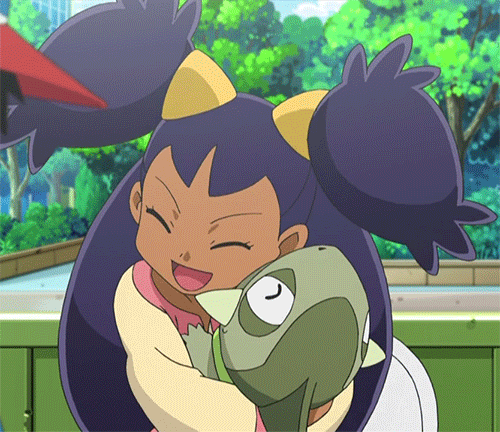
I empathize, like many other girls like me must, with everything Iris went through — the depression, the loneliness, the homesickness. We share, too, some coping mechanisms. Iris would often write letters to her friend Shannon, a Pokémon breeder introduced in the previous episode “A Village Homecoming!”. She lives in the Village of Dragons, and Iris encourages her to venture out into the rest of Unova to learn methods of breeding and encountering Pokémon outside of their hometown. And I, like a Dragon trainer on her way to be the very best, travel, and make a point of turning to a friend on social media, or shooting a text to one of my sorority sisters, when I feel out of place.
While Iris specializes in Dragon-type Pokémon, she also has an Excadrill (Ground-type) and an Emolga (Electric-type) on hand. Unlike many around her, Iris recognizes the importance of diversity. The differences between Pokémon types define their strengths and weaknesses. Perhaps that is the same of us as humans as well? Not in the sense of some ill-conceived “superiority” over each other, but, rather, as the character traits that make us unique?
As soon as I first saw Iris in the anime, I couldn’t help but rush to learn about her history and character. It was that research that cemented how I felt. Would that we all were open to being in awe of each other, excited to learn about one another, ready to grow exponentially thanks to the many things we can share—be that our background, our expertise, or even our favorite Pokémon. Because wasn’t that, really, the beauty of the Pokémon franchise when it started over 20 years ago? It brought us together. Like Iris and Axew and their friends Ash and Cilan, we got to share the experience of growing stronger together—as human beings and Pokémon trainers alike.
Thanks for reading The Dot and Line, where we talk about animation of all kinds. Don’t forget to for this article and follow us on Twitter and Facebook.


